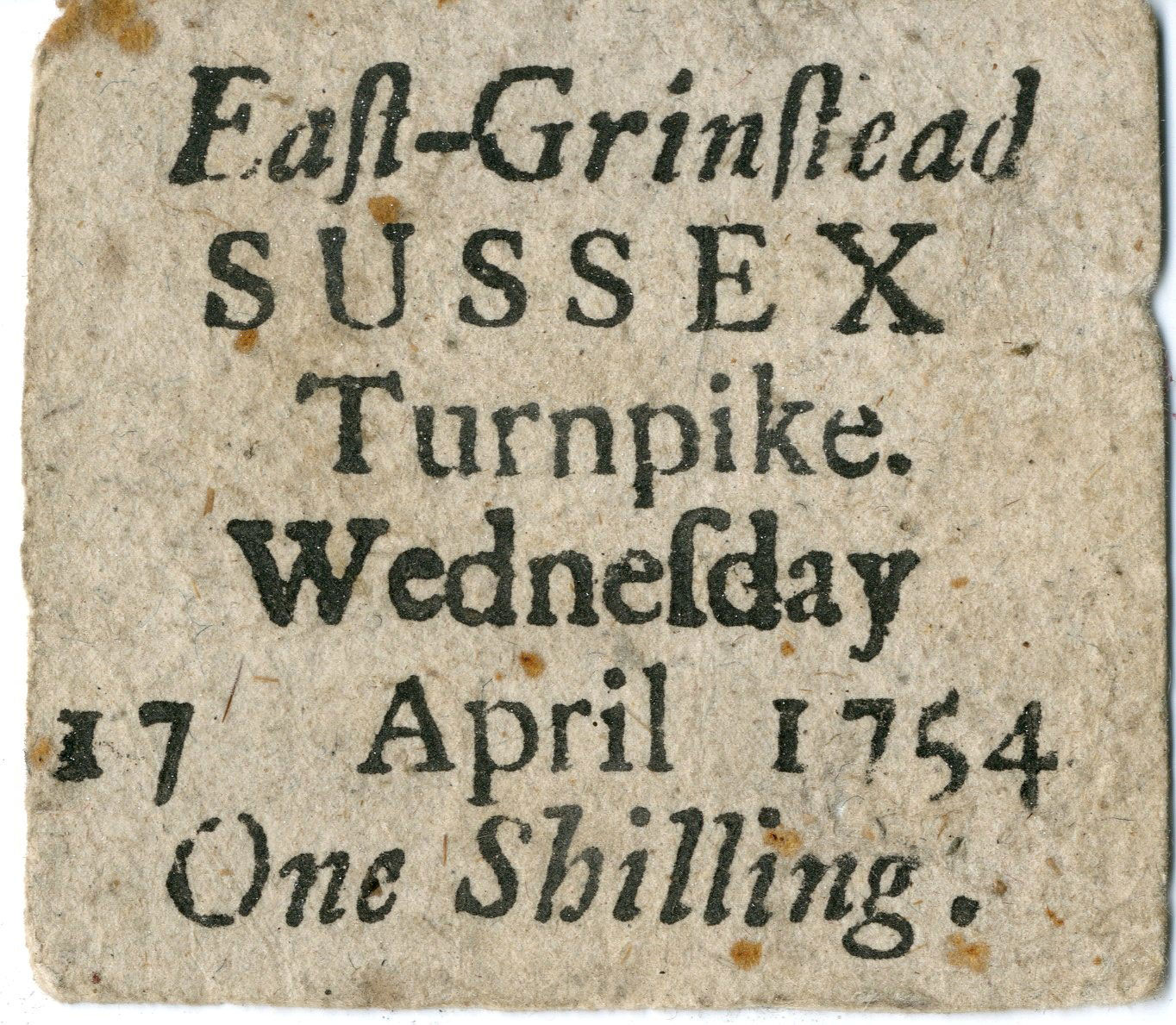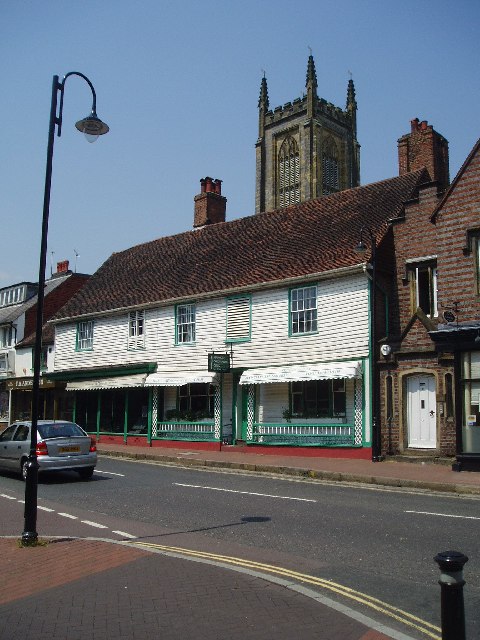|
East Grinstead Museum
East Grinstead Museum is located at Cantelupe Road in East Grinstead, West Sussex, England. It was established in 1995 in a purpose-built museum constructed with funding from the Heritage Lottery Fund and local donations. It replaced the town's first museum opened in 1926 in the St Swithun's Church tower under the supervision of the reverend Golding Golding-Bird. The first museum closed in 1955. The East Grinstead Society opened the East Grinstead Town Museum in 1976, using three rooms at East Court. The museum was accredited in 1995 and moved to a new site in September 2006. Notable collections include material relating to the Guinea Pig Club for former plastic surgery patients of the Queen Victoria Hospital in East Grinstead during the Second World War, and the associated medical drawings of Mollie Lentaigne Mary Evelyn Lentaigne (6 May 1920 – 29 April 2024) was a British medical artist and Red Cross Voluntary Aid Detachment nurse who worked at the Queen Victoria Hos ... [...More Info...] [...Related Items...] OR: [Wikipedia] [Google] [Baidu] |
East Grinstead
East Grinstead is a town in West Sussex, England, near the East Sussex, Surrey, and Kent borders, south of London, northeast of Brighton, and northeast of the county town of Chichester. Situated in the extreme northeast of the county, the civil parish has an area of . The population at the 2011 Census was 26,383. Nearby towns include Crawley and Horley to the west, Tunbridge Wells to the east and Redhill and Reigate to the northwest. The town is contiguous with the village of Felbridge to the northwest. Until 1974 East Grinstead was in East Sussex, before joining together with Haywards Heath and Burgess Hill as the Mid-Sussex district of West Sussex. The town is on the Greenwich Meridian. It has many historic buildings, and the Weald and Ashdown Forest lie to the south-east. Places of interest The High Street contains one of the longest continuous runs of 14th-century timber-framed buildings in England. Other notable buildings in the town include Sackville College, the san ... [...More Info...] [...Related Items...] OR: [Wikipedia] [Google] [Baidu] |
West Sussex
West Sussex is a county in South East England on the English Channel coast. The ceremonial county comprises the shire districts of Adur, Arun, Chichester, Horsham, and Mid Sussex, and the boroughs of Crawley and Worthing. Covering an area of 1,991 square kilometres (769 sq mi), West Sussex borders Hampshire to the west, Surrey to the north, and East Sussex to the east. The county town and only city in West Sussex is Chichester, located in the south-west of the county. This was legally formalised with the establishment of West Sussex County Council in 1889 but within the ceremonial County of Sussex. After the reorganisation of local government in 1974, the ceremonial function of the historic county of Sussex was divided into two separate counties, West Sussex and East Sussex. The existing East and West Sussex councils took control respectively, with Mid Sussex and parts of Crawley being transferred to the West Sussex administration from East Sussex. In the 2011 censu ... [...More Info...] [...Related Items...] OR: [Wikipedia] [Google] [Baidu] |
England
England is a country that is part of the United Kingdom. It shares land borders with Wales to its west and Scotland to its north. The Irish Sea lies northwest and the Celtic Sea to the southwest. It is separated from continental Europe by the North Sea to the east and the English Channel to the south. The country covers five-eighths of the island of Great Britain, which lies in the North Atlantic, and includes over 100 smaller islands, such as the Isles of Scilly and the Isle of Wight. The area now called England was first inhabited by modern humans during the Upper Paleolithic period, but takes its name from the Angles, a Germanic tribe deriving its name from the Anglia peninsula, who settled during the 5th and 6th centuries. England became a unified state in the 10th century and has had a significant cultural and legal impact on the wider world since the Age of Discovery, which began during the 15th century. The English language, the Anglican Church, and Engli ... [...More Info...] [...Related Items...] OR: [Wikipedia] [Google] [Baidu] |
Local History Museum
A local museum or local history museum is a type of museum that shows the historical development of a place/region (local history) using exhibits. These museums usually maintain a collection of historic three-dimensional objects which are exhibited in displays. Such museums are often small in nature and generally have a low budget for their running costs. As such, many of the collections are compiled, cataloged, and interpreted by amateur historians as well as professionals. These museums can cover a governmental defined unit such as a town, city, county, or parish or they can cover an area defined within the museum's mission. In the United States while some museums may be part of the local government or receive funding from them in some way. However, most local history museums are usually self-funded. These museums can also run as independent organizations or they can managed by an accompanying local historical society which also will maintain an archive of local records in ... [...More Info...] [...Related Items...] OR: [Wikipedia] [Google] [Baidu] |
East Grinstead Sussex Turnpike Ticket 1754
East or Orient is one of the four cardinal directions or points of the compass. It is the opposite direction from west and is the direction from which the Sun rises on the Earth. Etymology As in other languages, the word is formed from the fact that east is the direction where the Sun rises: ''east'' comes from Middle English ''est'', from Old English ''ēast'', which itself comes from the Proto-Germanic *''aus-to-'' or *''austra-'' "east, toward the sunrise", from Proto-Indo-European *aus- "to shine," or " dawn", cognate with Old High German ''*ōstar'' "to the east", Latin ''aurora'' 'dawn', and Greek ''ēōs'' 'dawn, east'. Examples of the same formation in other languages include Latin oriens 'east, sunrise' from orior 'to rise, to originate', Greek ανατολή anatolé 'east' from ἀνατέλλω 'to rise' and Hebrew מִזְרָח mizraḥ 'east' from זָרַח zaraḥ 'to rise, to shine'. '' Ēostre'', a Germanic goddess of dawn, might have been a perso ... [...More Info...] [...Related Items...] OR: [Wikipedia] [Google] [Baidu] |
Heritage Lottery Fund
The National Lottery Heritage Fund, formerly the Heritage Lottery Fund (HLF), distributes a share of National Lottery funding, supporting a wide range of heritage projects across the United Kingdom. History The fund's predecessor bodies were the National Land Fund, established in 1946, and the National Heritage Memorial Fund, established in 1980. The current body was established as the "Heritage Lottery Fund" in 1994. It was re-branded as the National Lottery Heritage Fund in January 2019. Activities The fund's income comes from the National Lottery which is managed by Camelot Group. Its objectives are "to conserve the UK's diverse heritage, to encourage people to be involved in heritage and to widen access and learning". As of 2019, it had awarded £7.9 billion to 43,000 projects. In 2006, the National Lottery Heritage Fund launched the Parks for People program with the aim to revitalize historic parks and cemeteries. From 2006 to 2021, the Fund had granted £254million ... [...More Info...] [...Related Items...] OR: [Wikipedia] [Google] [Baidu] |
Guinea Pig Club
The Guinea Pig Club, established in 1941, was a social club and mutual support network for British and allied aircrew injured during World War II. Its membership was made up of patients of Archibald McIndoe in Ward III at Queen Victoria Hospital, East Grinstead, Sussex, who had undergone experimental reconstructive plastic surgery, including facial reconstruction, generally after receiving burns injuries in aircraft. The club remained active after the end of the war, and its annual reunion meetings continued until 2007. Name The name "Guinea Pig" – the rodent species commonly used as a laboratory test subject – was chosen to reflect the experimental nature of the techniques and equipment used for reconstructive work at East Grinstead. The treatment of burns by surgery was in its infancy, and many casualties were suffering from injuries which, only a few years earlier, would have led to certain death. The hospital was nicknamed "the Sty". Origins The club was establis ... [...More Info...] [...Related Items...] OR: [Wikipedia] [Google] [Baidu] |
Queen Victoria Hospital
The Queen Victoria Hospital (QVH), located in East Grinstead, West Sussex, England is the specialist reconstructive surgery centre for the south east of England, and also provides services at clinics across the region. It has become world-famous for its pioneering burns and plastic surgery. The hospital was named after Queen Victoria. It is managed by the Queen Victoria Hospital NHS Foundation Trust. Proposals that the trust should be taken over by University Hospitals Sussex NHS Foundation Trust in 2021 were objected to by the governors of the trust. In September 2021 66% of the consultants said they had no confidence in the chief executive. In September 2022 the merger plans were abandoned. History Founded as East Grinstead Cottage Hospital in 1863, the hospital adopted the name, "Queen Victoria Hospital", in the 1930s and moved to its present site in 1936. During the Second World War, it developed as a specialist burns unit under the leadership of Sir Archibald McInd ... [...More Info...] [...Related Items...] OR: [Wikipedia] [Google] [Baidu] |
Mollie Lentaigne
Mary Evelyn Lentaigne (6 May 1920 – 29 April 2024) was a British medical artist and Red Cross Voluntary Aid Detachment nurse who worked at the Queen Victoria Hospital, England, during the Second World War. She is known for the drawings she made there of the surgical procedures of New Zealand plastic surgeon Archibald McIndoe who was working on injured servicemen. Around 300 of her drawings are held by the East Grinstead Museum where they form the Mollie Lentaigne Collection. Early life and family Lentaigne was born on 6 May 1920, the elder daughter of Lt. Col. Edward Charles Lentaigne Distinguished Service Order, DSO and Cecilia Mary Lentaigne ( Bunbury) in Shimla, Simla, British India. Her brother, second lieutenant John Wilfred O'Neill Lentaigne Military Cross, MC of the Rifle Brigade, died in 1942 at Battle of El Alamein, El Alamein. In 1955, she married Timothy Ingram Lock in Harare, then Salisbury, Rhodesia."Lentaigne" in They had four sons and two daughters.Beamish, David ... [...More Info...] [...Related Items...] OR: [Wikipedia] [Google] [Baidu] |
Local Museums In East Sussex
Local may refer to: Geography and transportation * Local (train), a train serving local traffic demand * Local, Missouri, a community in the United States * Local government, a form of public administration, usually the lowest tier of administration * Local news, coverage of events in a local context which would not normally be of interest to those of other localities * Local union, a locally based trade union organization which forms part of a larger union Arts, entertainment, and media * ''Local'' (comics), a limited series comic book by Brian Wood and Ryan Kelly * ''Local'' (novel), a 2001 novel by Jaideep Varma * Local TV LLC, an American television broadcasting company * Locast, a non-profit streaming service offering local, over-the-air television * ''The Local'' (film), a 2008 action-drama film * '' The Local'', English-language news websites in several European countries Computing * .local, a network address component * Local variable, a variable that is given loca ... [...More Info...] [...Related Items...] OR: [Wikipedia] [Google] [Baidu] |


.png)




